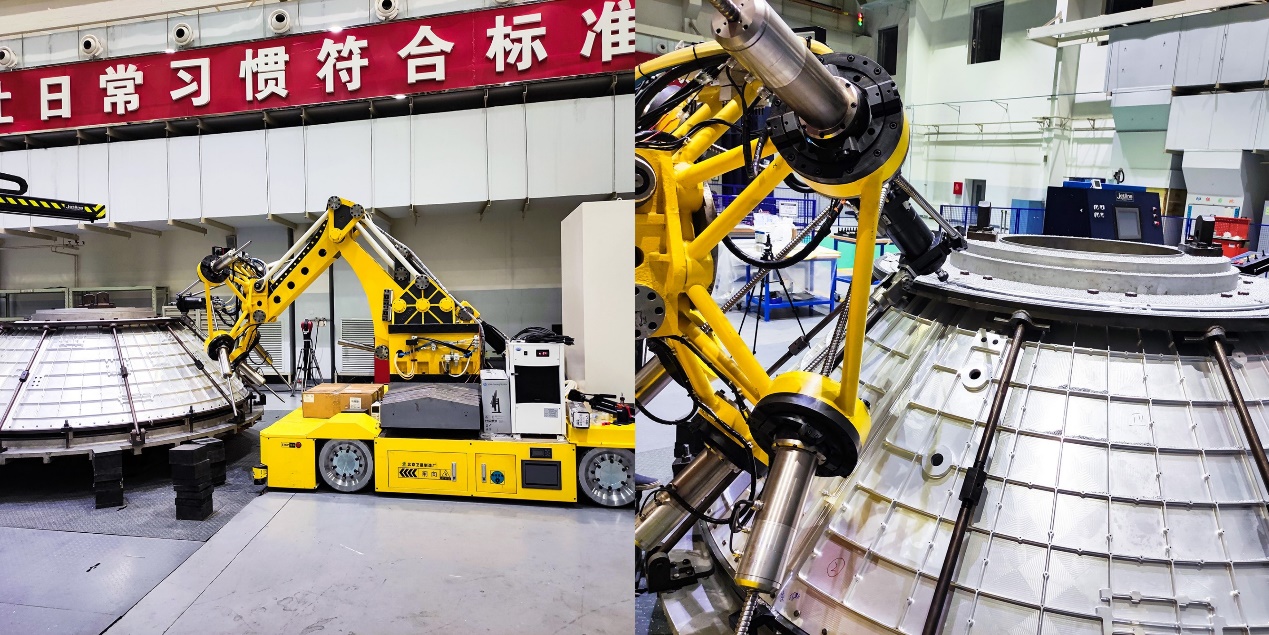The Tianzhou-6 cargo spacecraft successfully docked at the rear port of Tianhe core module at 5:16 on May 11th, then transformed to combined flight phase. This is another magnificent leap forward for China's aerospace industry.
Tianzhou-6 has a cargo-carrying capacity of 7.4 tons, making it the world's largest cargo spacecraft in active service. The cabin of Tianzhou-6 has the characteristic of large dimension and local high accuracy, which puts forward high requirement to the capacity of machining equipment.
Professor Xin-Jun Liu's Laboratory from the Department of Mechanical Engineering at Tsinghua University has been inspired by the working behaviors of creatures. They have proposed a novel in-situ machining mode of “wide-range positioning + local high-accuracy milling” for large-scale complex structures. On the basis, a five-axis parallel machining functional module was invented, and a mobile hybrid machining robot was designed and developed.
In November 2021, the developed technology was applied to Tianzhou-6 cargo spacecraft. The final assembly accuracy of 0.1 mm was achieved without manual repair, and a remarkable efficiency improvement was achieved. In this way, a robot with 10-ton level weight is successfully applied to replace the conventional machining method of “machine tool with 100-ton level weight + manual repair”. The developed robot has become the main equipment for machining of Tianzhou-series cargo spacecraft.

In-situ machining of Tianzhou-6’ conical segment
China Academy of Space Technology said Tianzhou-6 is the first cargo spacecraft in China that uses industrial robots to complete final machining. By utilizing the mobile hybrid robot, the spacecraft's cabin can be machined in-site, eliminating the frequent transportation between different workshops. This significantly enhances the production efficiency and manufacturing intelligence.
Editor:Li Han

